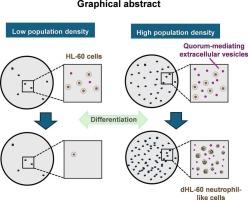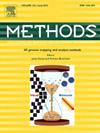Quorum sensing: An essential factor in culturing the human promyelocytic leukemia cell line HL-60 and its neutrophil-related functions
IF 4.3
3区 生物学
Q1 BIOCHEMICAL RESEARCH METHODS
引用次数: 0
Abstract
HL-60 cells are frequently employed as a standard in vitro model for neutrophil research and extensively utilized. However, the cultivation of HL-60 cells presents a recurring challenge. Historically, cell culture density has been ignored in the consistency of culture conditions. Here, we optimized the culture protocol and explored the impact of culture density on HL-60 cells. Additionally, we investigated the differentiated rate and antibacterial potential of differentiated HL-60 (dHL-60) neutrophils across varying cell density cultures. The findings revealed a positive correlation between cell proliferation activity and cell density, suggesting that increased density facilitates enhanced cell proliferation. Furthermore, as the density of the cell culture increased, there was a concomitant rise in the differentiation rate of HL-60 cells into neutrophils upon stimulation. Importantly, this elevated density also led to significantly higher levels of mitochondrial reactive oxygen species (ROS) production and bacterial phagocytosis. Further investigation revealed that small extracellular vesicles (sEVs) are crucial communicator in quorum sensing within HL-60 cells. Supplementation of HL60-derived sEVs (hEVs) in low-density cell populations resulted in a restoration of cell proliferation, in dose-dependent tendency. Conversely, the inhibition of EV-secretion in HL-60 cells restrains cell growth and proliferation. Overall, our study not only optimized the HL-60 cell culture protocol but also elucidated the critical role of culture density in enhancing HL-60 cell proliferation and antibacterial activity. This finding offers a noteworthy consideration for in vitro experiments of HL-60 cells and suggests the involvement of a quorum sensing mechanism within the neutrophil microenvironment.

群体感应:人早幼粒细胞白血病HL-60细胞培养及其中性粒细胞相关功能的重要因素。
HL-60细胞经常被用作中性粒细胞研究的标准体外模型,并被广泛应用。然而,HL-60细胞的培养提出了一个反复出现的挑战。从历史上看,细胞培养密度在培养条件的一致性中被忽略了。本实验优化培养方案,探讨培养密度对HL-60细胞的影响。此外,我们研究了HL-60 (dHL-60)中性粒细胞在不同细胞密度培养中的分化率和抗菌潜力。研究结果显示细胞增殖活性与细胞密度呈正相关,表明细胞密度增加有利于细胞增殖。此外,随着细胞培养密度的增加,HL-60细胞在刺激下向中性粒细胞的分化率也随之上升。重要的是,这种升高的密度也导致线粒体活性氧(ROS)产生和细菌吞噬水平显著提高。进一步的研究表明,小的细胞外囊泡(sev)是HL-60细胞群体感应的重要通讯载体。在低密度细胞群中补充hl60衍生的sEVs (hEVs)导致细胞增殖恢复,并呈剂量依赖趋势。相反,抑制HL-60细胞中ev的分泌会抑制细胞的生长和增殖。总的来说,我们的研究不仅优化了HL-60细胞培养方案,而且阐明了培养密度在促进HL-60细胞增殖和抗菌活性方面的关键作用。这一发现为HL-60细胞的体外实验提供了值得注意的考虑,并表明中性粒细胞微环境中参与了群体感应机制。
本文章由计算机程序翻译,如有差异,请以英文原文为准。
求助全文
约1分钟内获得全文
求助全文
来源期刊

Methods
生物-生化研究方法
CiteScore
9.80
自引率
2.10%
发文量
222
审稿时长
11.3 weeks
期刊介绍:
Methods focuses on rapidly developing techniques in the experimental biological and medical sciences.
Each topical issue, organized by a guest editor who is an expert in the area covered, consists solely of invited quality articles by specialist authors, many of them reviews. Issues are devoted to specific technical approaches with emphasis on clear detailed descriptions of protocols that allow them to be reproduced easily. The background information provided enables researchers to understand the principles underlying the methods; other helpful sections include comparisons of alternative methods giving the advantages and disadvantages of particular methods, guidance on avoiding potential pitfalls, and suggestions for troubleshooting.
 求助内容:
求助内容: 应助结果提醒方式:
应助结果提醒方式:


